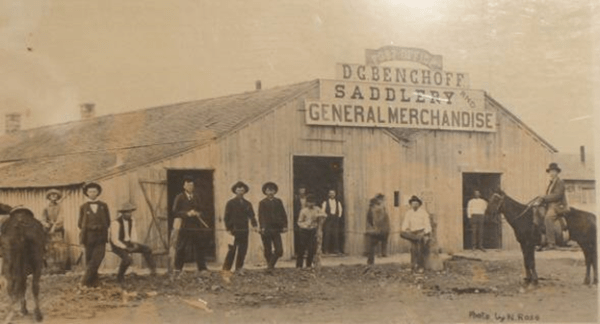Menard Texas: Honoring the Past, Looking to the Future
Students were asked to answer the question, “What history in your community is worth saving?”
By: 2018 Save Texas History Essay Contest Winner Laila Prest, Menard, Texas
“I wanted to be a cattle rancher when I was young, because it was what I knew and I loved it.”
– Sandra Day O’Connor

I live in Menard, Texas, a small town filled with history and memories from the past. Like much of Texas, Menard has gone through several periods of settlement each leaving an important mark and shaping our history. For thousands of years, Native Americans built campgrounds and hunted buffalo in the area. The Spanish came in the 18th Century and built a Catholic mission to convert the Indian tribes. They also built the Presidio De San Saba to protect the Mission, and a unique irrigation ditch to provide water for farming.

Menard marked the northernmost point of the Spanish Empire in what is now Texas. Within a few years, the Spanish were decimated by Apache and Comanche tribes. The earliest known depiction of Texas is a painting of the sacking of the Catholic mission by the Comanche and hangs in Mexico City, Mexico. Later, adventurers like Jim Bowie roamed the area in search of Spanish silver.

Around the middle of the 19th century, farmers and ranchers built a small community and modern Menard was born. For over 100 years, farming and ranching were central to the town’s identity. Ranching even helped rebuild the economy after the Civil War. However, as we march through the 21st century, ranching as an industry is in decline and ranching culture is at risk of being lost. Other industries such as oil, science, and technology are pulling people out of small communities in search of jobs elsewhere.

Ranching is slowly being forgotten as we move forward, and only the remnants are left in small towns like Menard. I think ranching culture built by our forefathers (and mothers), and the personal memories that protect it, are worthy of historical preservation.

We can save buildings, monuments, and historical sites, but saving a culture is a more difficult thing to do. When I look at paintings and photographs of my ancestors, I see seven generations of dedicated people working tirelessly to build a future for their families and community. I believe the photographs families hold dear are the keys to saving memories. These are our monuments.

A community-wide online archive of family photos could help Texans from ranching backgrounds like Menard remember the past and learn about their history. This could also be a way to preserve family history for those that have moved out of small towns like ours and perhaps even Texas. It would be a wonderful way to connect with your family. Families could share their ancestors’ stories and names preserving them for future generations. It would be a way to show the next generation the crucial role ranching played in building our great state.
While change is inevitable the loss of culture doesn’t have to be.

Laila Prest is the 4th Grade 2018 Save Texas History Essay Contest Winner.
The 2018 Save Texas History Essay Contest was sponsored by: Chris Cantu of Edward Jones Investments and Bob Eskridge of Just in Time Staffing, both from Round Rock, the Rotary Club of Austin and the Sons of the Republic of Texas — Moses Austin Chapter.
